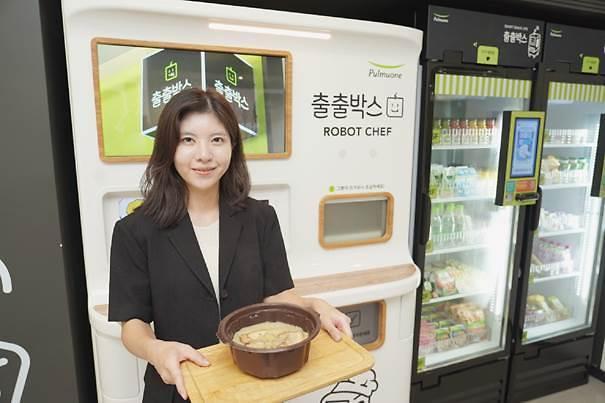
Cooking fumes, consisting of particulate matter or toxic gases, are often produced when heating hot oil or other food materials at extremely high temperatures. The cooking smoke contains hazardous substances such as formaldehyde and carbon monoxide, and some of these compounds can increase the risk of lung cancer.
"Our cooking robots are currently helping canteen workers with dangerous tasks such as cooking fried dishes and other hot temperature foods," Soonggok Middle School's academic affairs officer Lee Eun-ji told Aju Korea Daily on November 22. Since the beginning of the second semester of 2023, the robots have been used to fry, stir-fry, cook soup and rice, and add ingredients. In a survey conducted by Seoul's education office on canteen employees at the middle school, 86 percent answered that the adoption of robots has reduced their work by 25 to 30 percent.
Seoul's education office has demonstrated the robot cooks through a consortium that involves Hankook Robotics, a robot manufacturer in South Korea, and the Korea Franchise Association.
The adoption of culinary robots is gaining momentum in South Korea. In May 2023, robot chefs developed by Doosan Robotics, a domestic collaborative robot manufacturer, were deployed at a golf event in the eastern city of Chuncheon to serve noodles, fried chicken, and hot dogs. In February 2022, four different types of robot chefs were demonstrated at the country's largest army boot camp in Nonsan some 154 kilometers (96 miles) south of Seoul to reduce the burden of military chefs and the risks of safety accidents.
Collaborative robots are also prevalent in factories due to their autonomous operation functions and interactive capabilities. According to data released by Grand View Research, a global market research firm, the global market for collaborative robots is projected to reach $10.1 billion by 2025.


